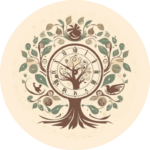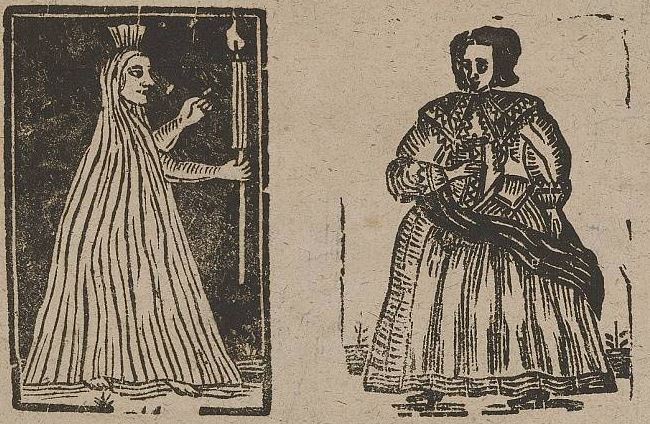Let me tell you a ghost story. I was reading the book “The Ghost: A Cultural History”, and I was reminded of one of my favourite early modern ballads featuring a ghost. For context, ballads would usually be about current events, and tended to be very sensationalised versions of the news set to familiar melodies. There were lots of ballads …
Birth Trays in Renaissance Italy and Motherhood
What if a seemingly ordinary wooden tray could tell the story of a society’s rebirth after one of the deadliest epidemics in history? “In the year of our Lord 1348, there happened at Florence, the finest city in all Italy, a most terrible plague…” So starts Boccaccio’s Decameron, one of the most celebrated texts in medieval literature. The Decameron tells us much about the …
Eaglestones: Historical Amulets for Childbirth
Content warning: Miscarriage/Abortion Part 1 – What are Eaglestones? Childbirth can be scary, especially if you’ve never given birth before and don’t know what to expect. Just like we might do today, throughout history, women have talked to each other about it, developed their rituals surrounding it, they have asked midwives and doctors questions, and they have prayed for protection. …
Green Sickness: A Historical Look at the ‘Disease of Virgins’
Imagine that it’s 1554, and you’re the father of a young girl who is unwell. You write to a friend of yours, who is a physician, describing her symptoms, which include her being ‘pale, as if bloodless’. And this is the reply you get: The doctor continues, writing that the ancient Greek physician Hippocrates suggests that So… the solution for …
What Made a 17th-Century Midwife Good at Her Job?
Percivall Willughby (1596–1685) despised the midwives of his time. In his 1670s book, Observations in Midwifery, he intended to ‘inform the ignorant common midwives’, whose brutal methods were responsible for so many deaths – according to him.
Maternal Mortality and “The Mother’s Legacy to Her Unborn Child”
Giving birth in early modern Europe was a dangerous rite of passage, one which most women would go through, and some would not survive. Women were largely defined by their domestic roles as wives and mothers: going through childbirth often changed a woman’s social status, as matrons were usually more respected, in no doubt thanks to their lived experiences giving birth and caring for their families.
A Grip on the History of Forceps in Medicine
On a cold winter evening in 1600, Peter Chamberlen the Younger found himself attending to a labouring woman on the outskirts of London. The mother-to-be had been in labour for over 48 hours, and the situation was dire. Despite his wealth of experience, Peter feared that both the mother and child might be lost.
‘Unnatural Mothers’: The Surprising History of Abandoned Children
When I was around four years old, I was terrified of the tale of Hansel and Gretel. How could a mother just abandon her children in the woods, even if the family had nothing to eat? Somehow that seemed even worse than the fact that a grandmotherly figure would trap those same children and try to eat them.
Giving Birth in 17th-century England: A Tentative List
What to do, what to buy, what to organise, what to cook, what to read… I made so many lists when I was pregnant that it would take a new list to organise them all! Expectant parents are bombarded today with information about how to prepare for the arrival of a baby. Yet childbirth itself has never been more medicalised and arguably out of families’ control. But what about the past, before social media, Amazon wish lists, and insipid hospital food? Here’s a list of how to prepare for a new baby in 17th-century England.
‘Let Nature Take its Course’: In Defence of ‘Gentle’ Midwifery
In the 16th and 17th centuries, a delivery room could be a noisy place. Childbirth was a social event, and birthing chambers were often full of women (friends, relatives, servants, midwives…), celebrating and helping the one giving birth. However, whenever I picture this scene, I remember how important it was to me that my birthing environment be calm and quiet.
- Page 1 of 2
- 1
- 2











